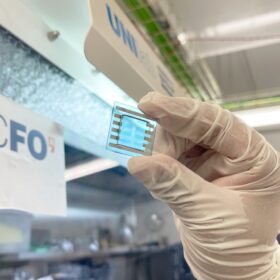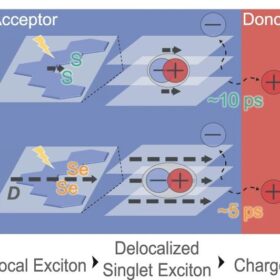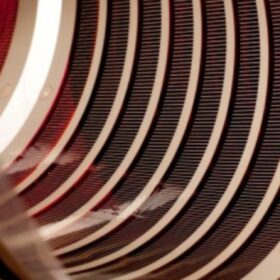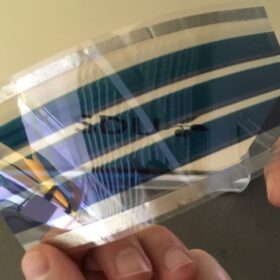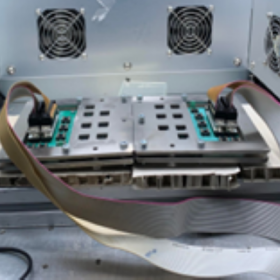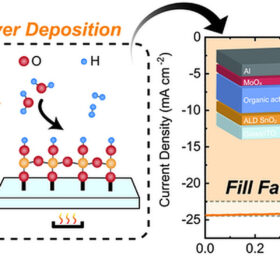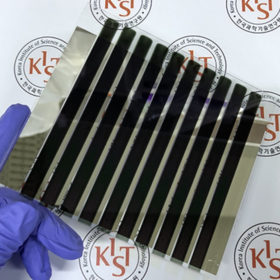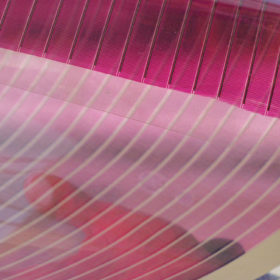Four-terminal tandem organic solar cell achieves 16.94% efficiency
Researchers in Spain claim to have recorded the highest power conversion efficiency result for a four-terminal tandem organic cell to date. The device is based on an ultrathin transparent silver electrode.
Non-fullerene organic solar cell with selenium acceptor achieves 19% efficiency
Researchers in China have designed an organic solar cell the uses an acceptor based on selenium as an alternative to commonly utilized non-fullerene acceptors. The new acceptor enabled the cell to have reduced non-radiative recombination loss and improved dielectric constant.
TechBlick’s event shows roadmaps for perovskite, organic PV
A recent industry event about organic, perovskite, and other emerging cell technologies hosted by TechBlick revealed advances in power conversion efficiencies, stability, availability of materials, and specialized manufacturing equipment. The event also showed that the number of startup companies, new products and new pilot lines is increasing at a fast pace.
Vitamin C treatment improves stability of inverted organic solar cells
Danish researchers report that treating non-fullerene acceptor-based organic solar cells with vitamin C provides an antioxidant activity that alleviates the degradative processes arising from heat, light, and oxygen exposure. The cell achieved a power conversion efficiency of 9.97 %, an open-circuit voltage of 0.69 V, a short-circuit current density of 21.57 mA/cm2, and a fill factor of 66%.
MXenes-based organic solar cells offer greater stability, claim scientists
An international research team claims to have achieved greater stability in organic solar cells made with an electron transport layer doped with two-dimensional titanium carbide (Ti3C2Tx) – also known as “2D MXenes.” They used green solvents and an MXenes material known as titanium carbide (Ti3C2Tx).
Fraunhofer ISE unveils 15.8%-efficient organic solar cell
Germany’s Fraunhofer ISE has achieved a world record efficiency for organic cells at the lab level. It now aims to bring the PV technology to market maturity.
Tin oxide-based organic solar cell hits 17.26% efficiency, 79% fill factor
Dutch scientists have used atomic layer deposition to build an organic solar cell with a tin oxide electron transport layer. This improved electron mobility and transparency, resulting in a record fill factor.
Large-area organic solar cell with 14.7% efficiency
Scientists in Korea built an organic solar cell that is reportedly able to prevent aggregation in photoactive layers. The device could be used for applications in buildings, vehicles, and the Internet of Things.
Nanocomposite films for 13.57%-efficient organic solar cell
Scientists in Malaysia have used, for the first time, nanocomposite films based on zinc oxide and polyvinyl alcohol in organic solar cells. These films were able to improve the efficiencies of the PV devices by up to 3.5%.
Fraunhofer ISE develops organic solar cell with 14.9% efficiency
The record was obtained with a 1.1 sq cm device.
